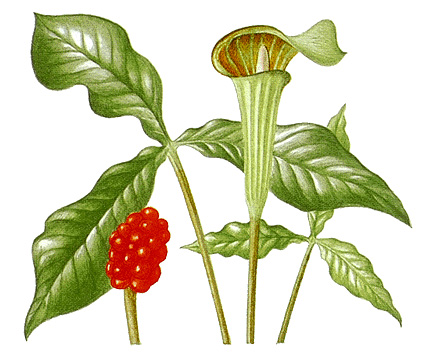Jack-in-the-pulpit is any of several American wildflowers that grow in moist woodlands, flood plains, thickets, and swampy or boggy areas. Jack-in-the-pulpits are found chiefly in the eastern half of the United States. They are also called Indian turnips or bog onions.

A jack-in-the-pulpit has a spadix, which is a cluster of small flowers crowded on a slender stalk. This part of the plant is the “preacher.” It is enclosed in a hoodlike, leafy spathe, which forms the “pulpit.” Spathes vary from green to purple or bronze, and may be striped. The flowers bloom from April to June. The plant also has showy clusters of scarlet or red-orange berries.
The jack-in-the-pulpit is considered poisonous when eaten raw. The plant’s tissues contain bundles of needlelike crystals that can injure the mouth and throat. Native Americans used the plant for food, but only after a long series of preparations to make it edible.
See also Arum.
